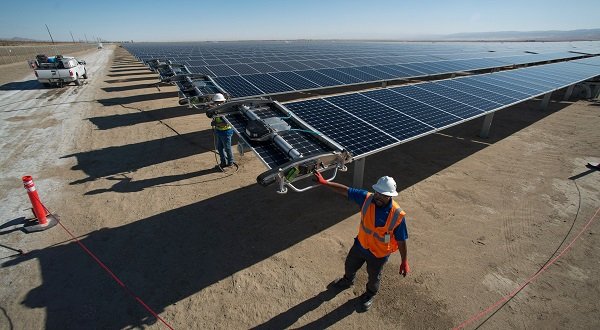Imagine a world where your coffee maker starts brewing your favorite blend as soon as you wake up, your car sends a notification to your phone when it needs an oil change, and your office building adjusts the temperature and lighting based on your preferences. This is the world of the Internet of Things (IoT), where everyday devices are connected to the internet, allowing them to communicate with one another and with us. As the IoT landscape continues to evolve, it’s transforming the way we live and work, offering a plethora of benefits that range from improved efficiency and productivity to enhanced customer experiences.
Key Takeaways
- IoT enables automation and uptime, streamlining processes and improving efficiency
- IoT generates vast amounts of data that can be leveraged for data-driven decision making
- IoT can reduce costs and improve operational efficiency through energy optimization and predictive maintenance
- IoT enables personalized services and real-time feedback, enhancing customer experiences
- Data security and compliance are critical considerations in IoT implementation
Improved Efficiency and Productivity
One of the most significant benefits of IoT is its ability to improve efficiency and productivity. By connecting devices and systems, IoT enables automation and uptime, reducing downtime and increasing overall efficiency. For example, in a manufacturing plant, IoT sensors can monitor equipment performance and alert maintenance teams when a machine needs attention, preventing unplanned downtime and improving productivity.
IoT can also streamline processes by automating mundane tasks, freeing up employees to focus on higher-value work. In a retail setting, IoT devices can automatically track inventory levels and reorder products when supplies run low, reducing the need for manual inventory checks and allowing employees to focus on customer service.
Real-world examples of IoT’s impact on efficiency and productivity abound. For instance, the Port of Rotterdam, one of the busiest ports in the world, has implemented IoT technology to optimize container management and reduce wait times for ships. By using IoT sensors to track container movement and analyze traffic patterns, the port has been able to reduce ship waiting times by up to 20%, improving overall efficiency and reducing costs.
Enhanced Data Collection and Analysis
Another key benefit of IoT is its ability to generate vast amounts of data that can be leveraged for data-driven decision making. By collecting data from a wide range of devices and systems, businesses can gain real-time insights into customer behavior, supply chain performance, and resource allocation, enabling them to make informed decisions that drive growth and profitability.
IoT can also enable predictive maintenance, using sensors to detect potential issues before they cause major problems. For example, in the aviation industry, IoT sensors can monitor engine performance and alert maintenance teams when a part needs to be replaced, reducing the risk of in-flight emergencies and improving safety.
Real-time data collection and analysis are also transforming industries like healthcare, where IoT devices can monitor patient health and alert healthcare providers when intervention is needed. For instance, the University of Virginia Health System has implemented IoT technology to monitor patients with heart failure, reducing hospital readmissions by 40% and improving patient outcomes.
Cost Reduction and Operational Efficiency
IoT can also help businesses reduce costs and improve operational efficiency. By optimizing energy consumption and reducing waste, IoT devices can help businesses reduce their environmental impact and lower utility bills. For example, smart thermostats can automatically adjust temperature settings based on occupancy and weather conditions, reducing energy waste and lowering costs.
Predictive maintenance is another way IoT can reduce costs and improve operational efficiency. By detecting potential issues before they cause major problems, businesses can reduce maintenance costs and downtime, improving overall performance and profitability.
Real-world examples of IoT’s impact on cost reduction and operational efficiency include the use of IoT sensors in agriculture to optimize irrigation and reduce water waste, and the use of IoT technology in the oil and gas industry to monitor pipeline performance and prevent leaks.
| Industry | IoT Application | Benefits |
|---|---|---|
| Manufacturing | Predictive maintenance | Reduced downtime, improved efficiency |
| Retail | Inventory management | Automated ordering, reduced waste |
| Healthcare | Patient monitoring | Improved outcomes, reduced readmissions |
| Agriculture | Precision farming | Optimized resource use, increased yields |
Improved Customer Experience
IoT is also transforming the way businesses interact with customers, enabling personalized services and real-time feedback that enhance customer experiences. By collecting data on customer preferences and behavior, businesses can tailor their products and services to meet individual needs, improving customer satisfaction and loyalty.
For example, in the hospitality industry, IoT devices can be used to create personalized guest experiences, from customized room settings to targeted promotions based on guest preferences. In the retail industry, IoT technology can be used to provide real-time product information and personalized recommendations, enhancing the shopping experience and driving sales.
Real-world examples of IoT’s impact on customer experience include the use of IoT technology in the automotive industry to provide personalized in-car experiences, from customized infotainment systems to predictive maintenance alerts. In the healthcare industry, IoT devices can be used to provide personalized care plans and real-time feedback to patients, improving engagement and outcomes.
Security and Compliance
As the use of IoT devices grows, so do concerns around data security and privacy. With the increasing amount of data being collected and shared by IoT devices, it’s critical for businesses to prioritize data security and ensure compliance with relevant regulations and standards.
To address these concerns, businesses must implement robust security measures, such as encryption, access controls, and network segmentation, to protect sensitive data and prevent unauthorized access. They must also ensure compliance with regulations such as GDPR and HIPAA, which govern the collection, use, and storage of personal data.
Real-world examples of IoT security and compliance include the use of blockchain technology to secure IoT data and ensure privacy, and the development of industry-specific security standards, such as the Industrial Internet Consortium’s Security Framework.
Conclusion
The Internet of Things is transforming the way we live and work, offering a wide range of benefits that range from improved efficiency and productivity to enhanced customer experiences. As the IoT landscape continues to evolve, it’s opening up new opportunities for businesses to innovate and grow, from automating processes and reducing costs to delivering personalized services and improving customer satisfaction.
However, as businesses navigate the IoT landscape, it’s critical to prioritize data security and compliance, implementing robust security measures and ensuring adherence to relevant regulations and standards. By doing so, businesses can harness the power of IoT while protecting sensitive data and maintaining customer trust.
As the use of IoT continues to grow, it’s clear that the technology will play an increasingly important role in shaping the future of business and society. From smart cities and connected homes to industrial applications and beyond, the possibilities for IoT are endless, and the benefits are significant. As businesses embrace the power of IoT, they’ll be well-positioned to drive innovation, improve performance, and enhance the customer experience, now and in the years to come.








No Comment! Be the first one.